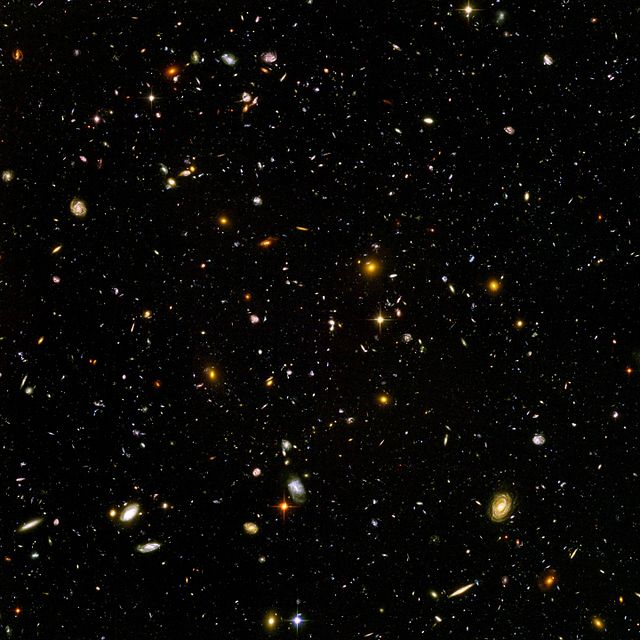How cold is the space? It typically has a temperature that is higher than the cosmic microwave background radiation, which covers the entire universe. However, it can be even colder when stars die. Such a location can be found in the protoplanetary Boomerang Nebula.
What is the coldest place in the universe?
The distance between us and the sun is 149,600,000 km. Around 300 K is the average temperature on Earth (however, we are still warmed by the hot core of the planet, and without an atmosphere, it would be 50 K colder). It gets colder the further you are from the nearest star. For instance, Pluto has a temperature of only 44 K, where even nitrogen freezes. Since our atmosphere contains 80% nitrogen, this means that precipitation would occur there. Additionally, it is even colder outside the solar system in interstellar space.
The temperature of the matter in the molecular clouds, which float through the galaxy light-years from nearby stars, is between 10 and 20 K, which is almost the same as absolute zero. There is nowhere colder than them, anywhere in the galaxy: all other parts of it are somehow warmed by the radiation of stars.
You can freeze even more in intergalactic space than in a molecule cloud far from radiation sources. The CMB radiation left over from the Big Bang is the only radiation that can travel to all points in space because the galaxies are separated by millions of light-years of empty space. The CMB can never be cooler than 2.725 K because that is the temperature of intergalactic space. It might appear that there isn’t a place on earth with a colder climate. However, it is not.
More specifically, it won’t. You need to wait until the Universe expands a little bit more (it already does this at a speed of about 770 km/s) for the radiation temperature in intergalactic space to decrease below 2.725 K.
The cosmic microwave background is currently 13.78 billion years old, and when it doubles in size, it will only be one degree above absolute zero.
Surprise, you can now place such a frigid location in the universe! In the Boomerang Nebula, which is conveniently situated about 5,000 light-years from Earth and is even relatively close to home.
A dying star that was once a yellow dwarf star like our Sun lies at the center of the Boomerang Nebula. The star in the Boomerang Nebula evolved into a red giant, and like other stars of the same spectral type, it died in a system with a white dwarf and a preplanetary nebula nearby.
A planetary nebula is made up of the leftover material from a red giant that a star shed when its center contracted to become a white dwarf. A red dwarf must first spend some time as a pre-planetary nebula before evolving into a planetary nebula. A preplanetary nebula’s temperature can fall below the universe’s minimum if all the necessary factors come together. This was demonstrated by calculations made by Indian astronomer Ravendra Sahai prior to the creation of a temperature map of Boomerang and confirmation that the region was actually extremely cold.
When a star’s core temperature increases and its periphery is just starting to separate, a preplanetary nebula forms. One or two jets, plasma flows that originate in the outermost layers of the star’s matter, are most frequently responsible for the ejection of matter.
According to cosmic standards, jets only have a short lifespan of a few thousand years. The star is losing matter at an enormous rate if the plasma in the jets moves quickly enough (as it does in the Boomerang). The fact that regions of the star develop where the temperature of matter is 0.5 K—lower than anywhere else in the universe—occurs precisely because of this astounding rate at which matter leaves the star.
This phenomenon occurs for the same reason that air exhaled with the mouth open wide is colder than 36.6°C and colder than air exhaled with the lips pursed. The air cools down as the molecules’ thermal energy is used up and converted to kinetic energy through motion.
Why such low temperatures?
A dying star is dying in the nebula’s center. In a system of white dwarfs and planetary nebula, it was once a yellow dwarf and is now nearing the end of its life. But before she underwent all the changes common to the stars in her class, she briefly existed as a pre-planetary nebula. This condition develops as the stellar core’s temperature rises and the periphery is just starting to separate.
In this instance, 1-2 jets (plasma flows from the outer layers of the star’s matter) may be used to eject matter. The plasma in the Boomerang Nebula expanded incredibly quickly while traveling at a high speed of about 600,000 km/h. It was due to the nebula’s extremely rapid expansion.






